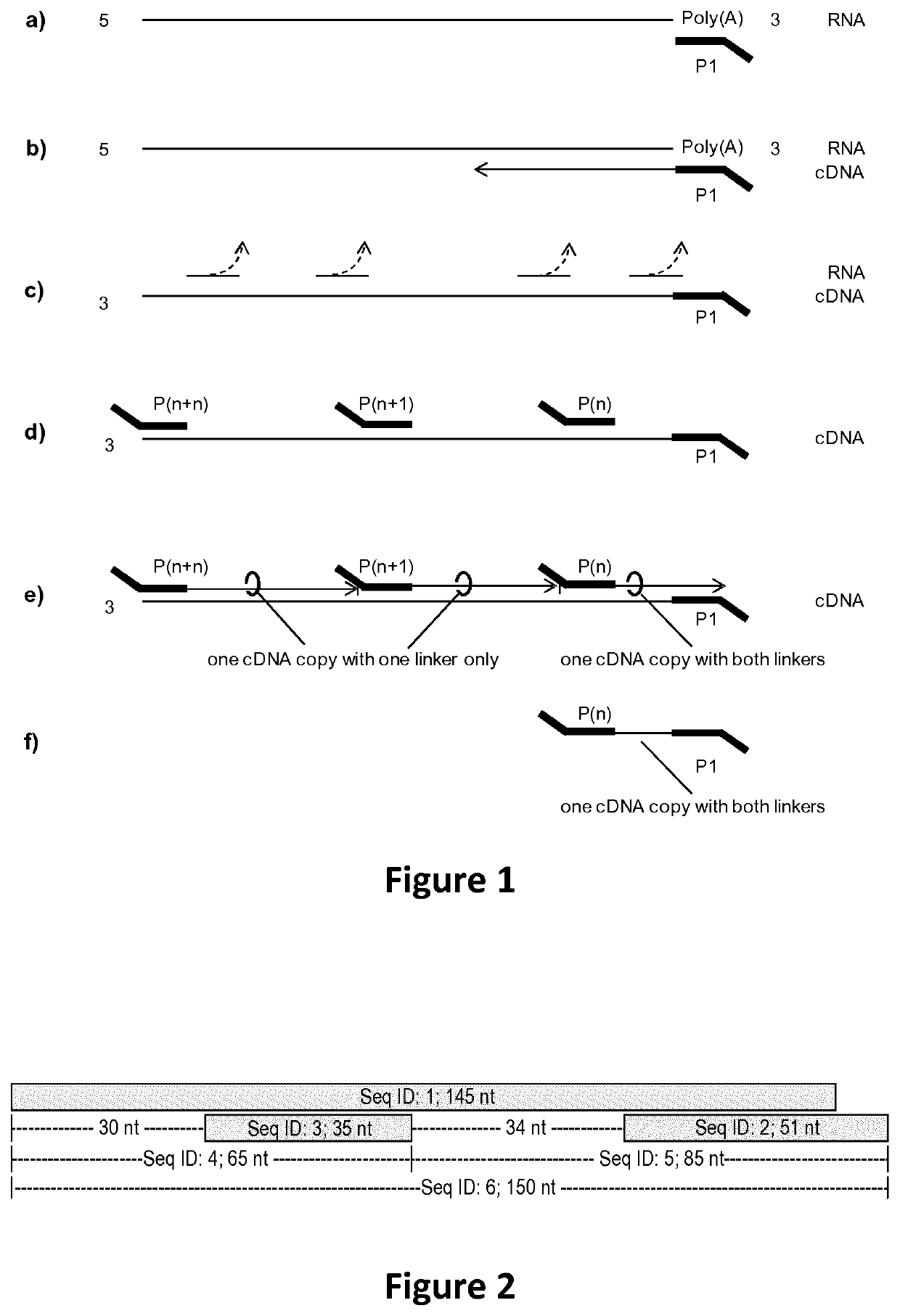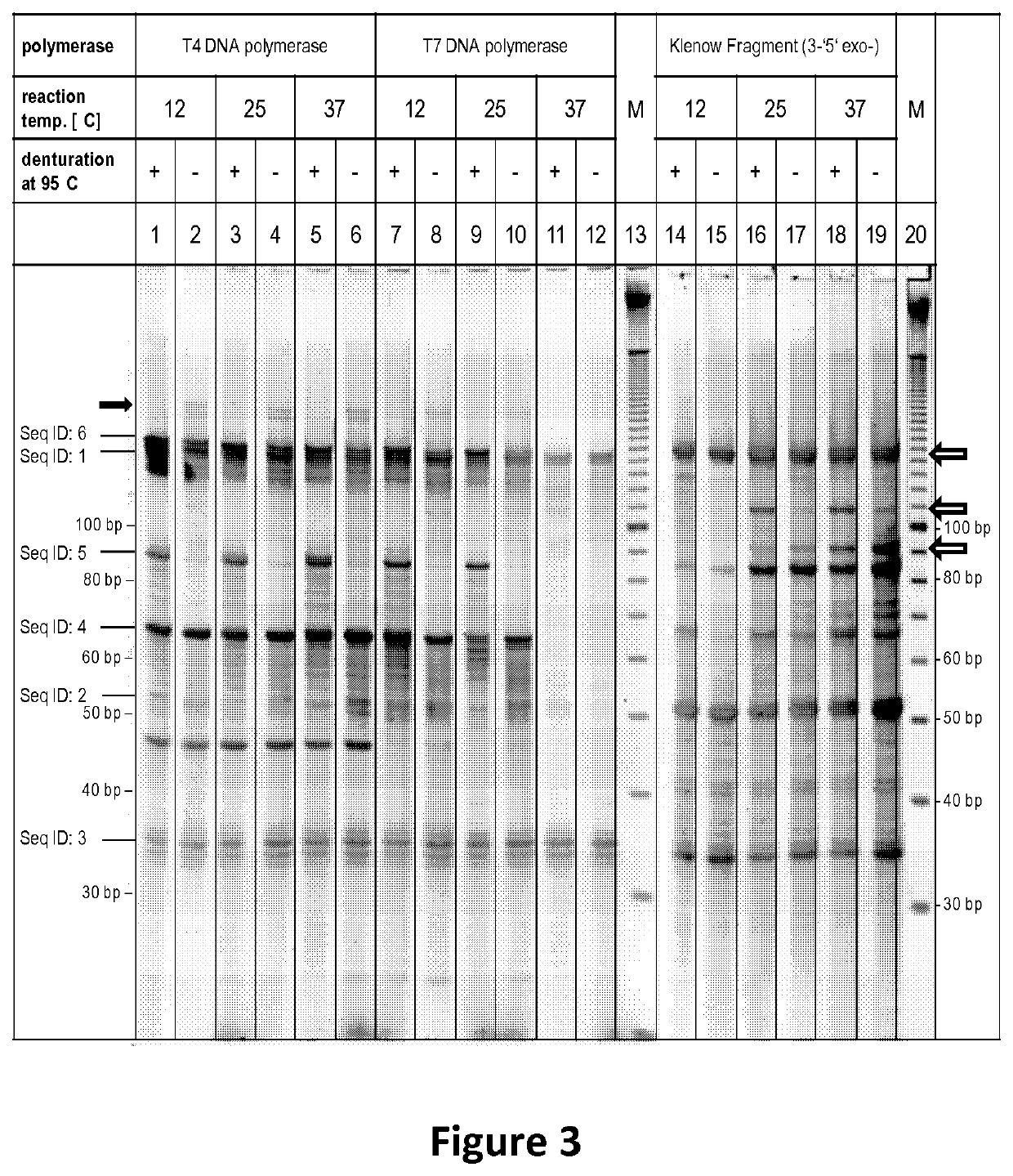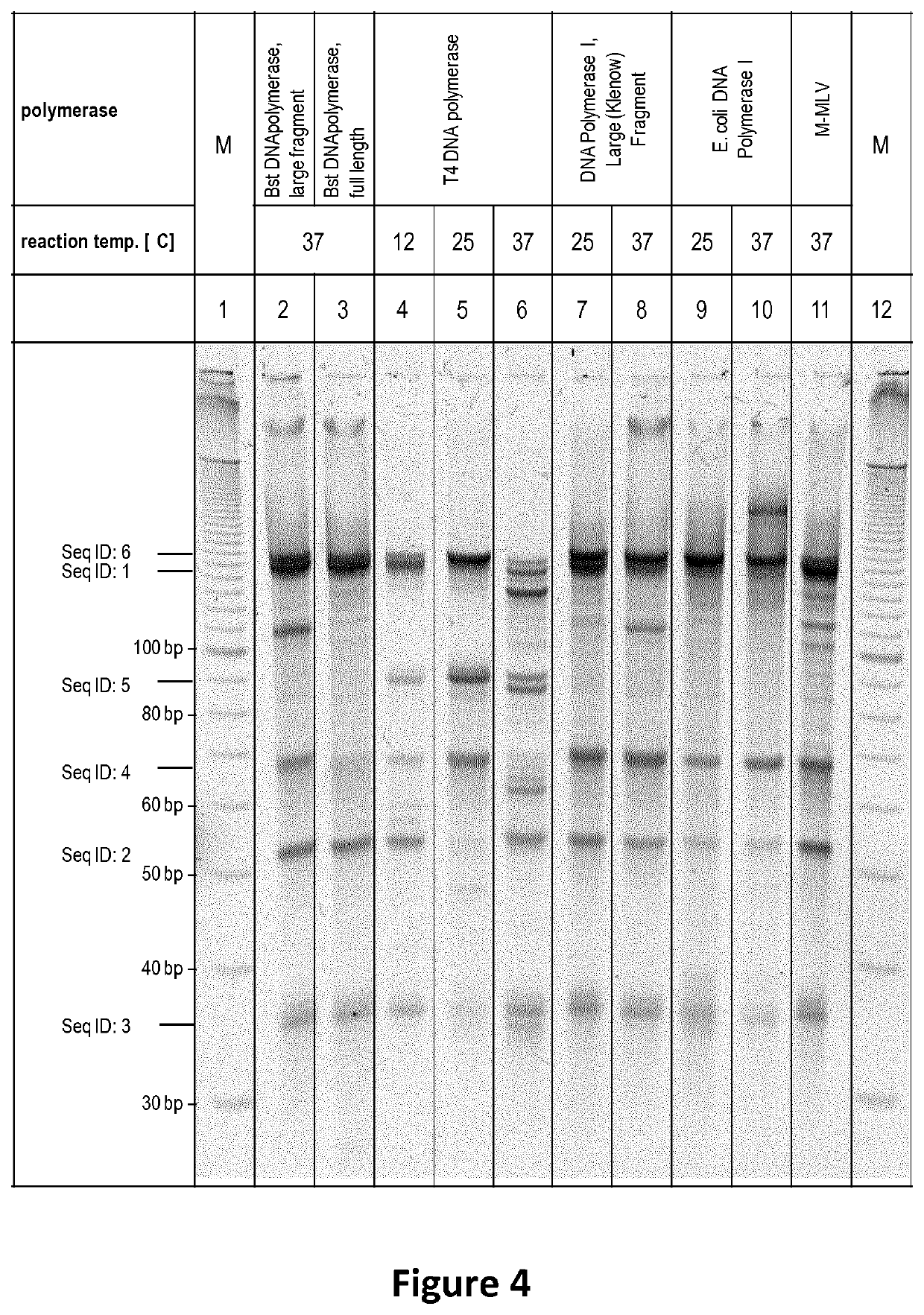Copy number preserving RNA analysis method
a technology of rna analysis and copy number preservation, which is applied in the field of transcript amount and type estimation assays, can solve the problems of ambiguous results of high-resolution gene expression experiments, increased costs such as the requirement of measurement accuracy and cost, and inability to carry out large-scale analysis
- Summary
- Abstract
- Description
- Claims
- Application Information
AI Technical Summary
Benefits of technology
Problems solved by technology
Method used
Image
Examples
example 1
[0096]3′ terminal NGS library generation for an Illumina sequencing platform
[0097]In short, the principle library generation is carried out as described in FIG. 1. a) cDNA synthesis is initiated by priming to a known region or tag which is either present already (here Poly(A) of mRNA) or attached in a preceding reaction. P1 is complementary to said known region and furthermore contains a non complementary specific sequence at its 5′ end serving as a universal tag. b) RNA is reverse transcribed into cDNA by an RNA dependent polymerase i.e. a reverse transcriptase. c) After cDNA synthesis the RNA template is hydrolyzed or degraded either by RNAses, pH changes (NaOH and heat), or divalent cations (Mn2+, Mg2+ and heat). d) Then, the single stranded cDNA is primed by multiple random primers, P(n), P(n+1), . . . , P(n+n), and e) a second strand is synthesized using a DNA dependent polymerase without strand displacement. The lack of strand displacement guarantees that only the most 3′ frag...
example 2
[0106]comparison of non-stopping polymerases with strand displacement activity (klenow) and stopping polymerases without strand displacement activity (T4 and T7) at different temperatures (FIGS. 2, 3 & 4)
[0107]Assay Description:
[0108]A schematic representation of the assay set up is shown and described in FIG. 2. Different polymerases with strand displacement, with and without ability to destroy the displaced stand and polymerases without strand displacement were evaluated using the assay described in FIG. 2. Briefly Seq ID: 1, Seq ID: 2 and Seq ID: 3 were hybridized in the corresponding buffer of the different polymerases. After hybridization polymerases were added (3 U T4 DNA polymerase, 10 U T7 DNA polymerase, or 5 U Klenow Fragment (3′-5′ exo-), and the reaction was performed as indicated in FIG. 3 and FIG. 4. Reaction time was 10 minutes at the indicated temperature. Afterwards the reactions were purified via silica columns to remove buffer components and enzymes without any si...
example 3
[0110]RNA degradation with MnCl2, elevated temperature only, NaOH treatment, or RNAses (FIG. 5) degradation of RNA also depends on the buffer conditions
[0111]Total RNA isolated from mouse liver was spiked with a 111 nt single stranded DNA (ssDNA) oligo (ID Seq ID: 7) see lane 1 and lane 10. Total RNA is long hence only smaller RNA band are visible on the gel, the long RNA fragments remain in the slot. Upon fragmentation the longer RNA fragments become degraded and are visible as a smear on the polyacrylamide gel.
[0112]Heat treatment in a standard RT-buffer 50 mM Tris-HCl (pH 8.3 at 25° C.), 75 mM KCl, 3 mM MgCl2 and 10 mM DTT for 30 minutes at 95° C. and for 5 minutes at 98° C., 10 minutes at 98° C., 20 minutes at 98° C., and 30 minutes at 98° C., results in degradation of the RNA, but not a complete removal of the RNA. Incubation of the RNA / ssDNA mixture with RNase H / A / T1 mix for 30 minutes either at 25° C. or at 37° C. completely removes the RNA without degrading the single strand...
PUM
| Property | Measurement | Unit |
|---|---|---|
| temperatures | aaaaa | aaaaa |
| temperatures | aaaaa | aaaaa |
| temperature | aaaaa | aaaaa |
Abstract
Description
Claims
Application Information
 Login to View More
Login to View More - R&D
- Intellectual Property
- Life Sciences
- Materials
- Tech Scout
- Unparalleled Data Quality
- Higher Quality Content
- 60% Fewer Hallucinations
Browse by: Latest US Patents, China's latest patents, Technical Efficacy Thesaurus, Application Domain, Technology Topic, Popular Technical Reports.
© 2025 PatSnap. All rights reserved.Legal|Privacy policy|Modern Slavery Act Transparency Statement|Sitemap|About US| Contact US: help@patsnap.com



